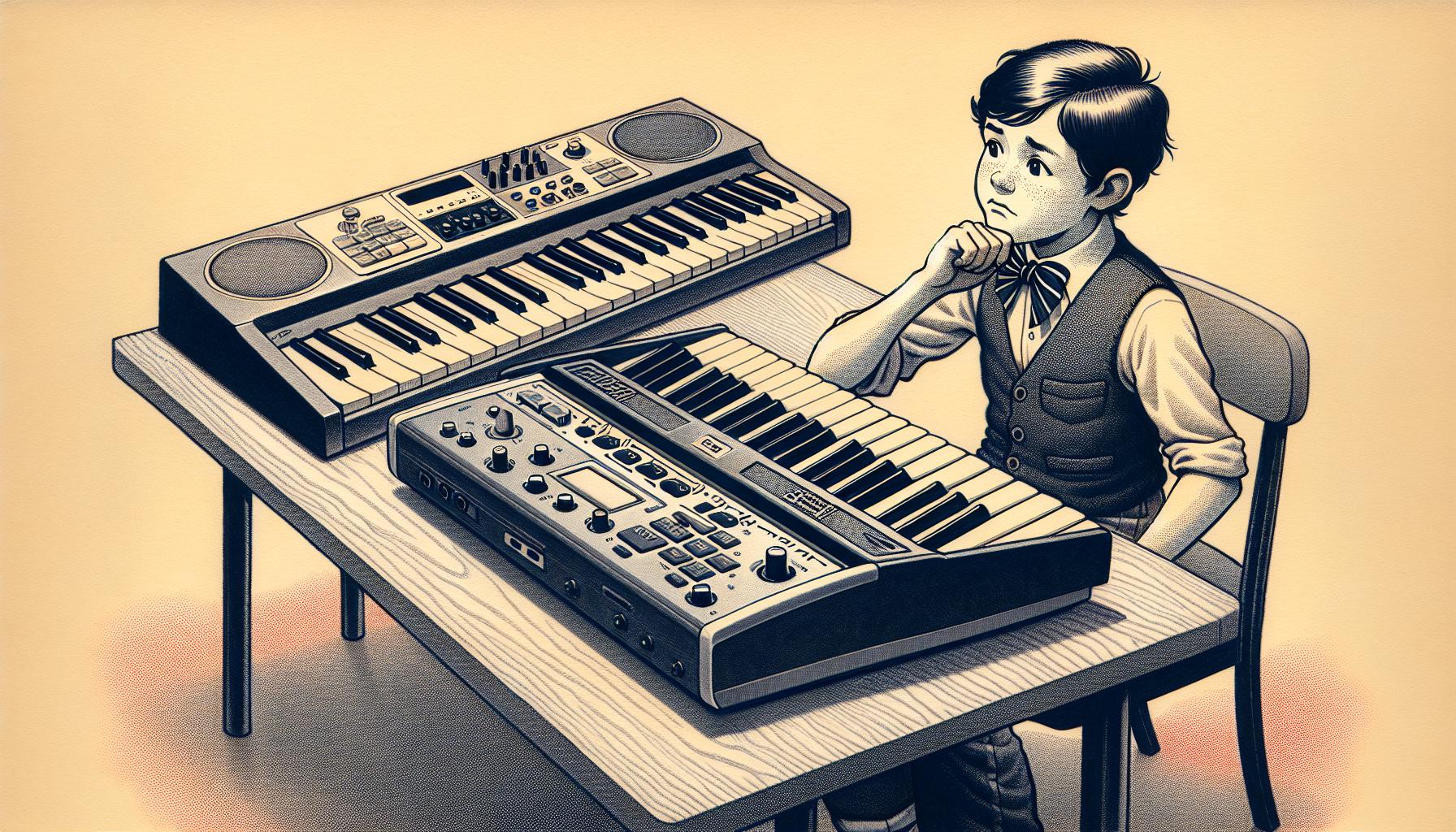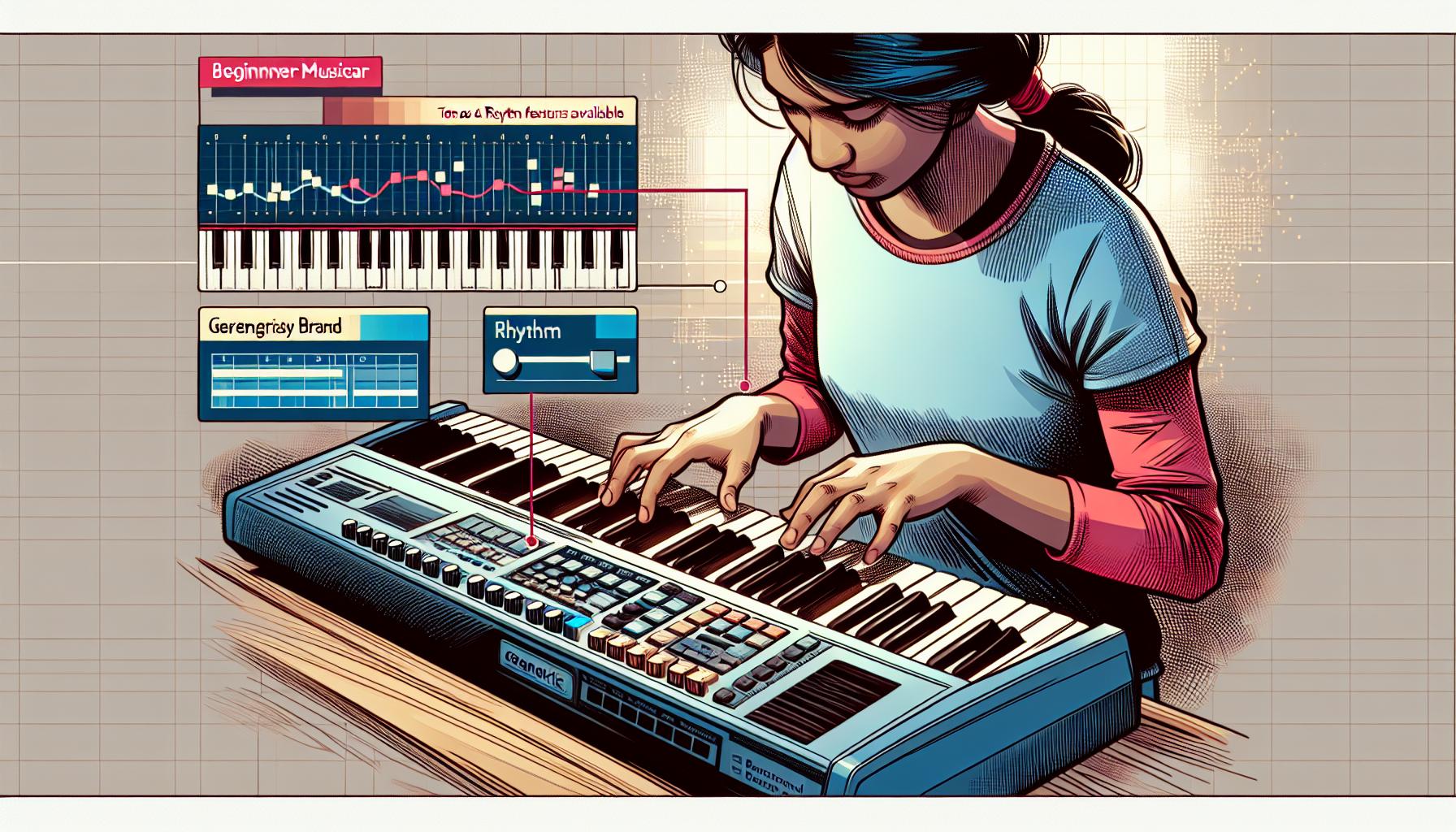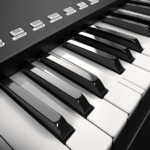Deciding between a Yamaha and Casio keyboard can be a bit like choosing between chocolate and vanilla ice cream. Both are great, but each has its unique flavor that appeals to different tastes. For beginners, this choice is even more crucial as it lays the foundation for their musical journey.
Yamaha and Casio have been at the forefront of making quality keyboards that are both beginner-friendly and packed with features that can grow with the musician. They're like the friendly guides in the world of music, each offering a path that's a little different but equally rewarding. Let's dive into what makes each brand stand out and help you decide which keyboard might be the best companion for your musical adventure.
Yamaha Keyboards: Features and Benefits
When embarking on the journey of picking the right beginner keyboard, Yamaha stands out for its commitment to quality and innovation. Recognized globally for their superior sound and craftsmanship, Yamaha keyboards offer a plethora of features that cater to novices and budding musicians.
Yamaha's technology, notably the Advanced Wave Memory (AWM) sampling, allows keyboards to produce sounds that are incredibly close to those of acoustic instruments. This digital prowess is crucial for beginners, as it immerses them in rich, authentic tones from the get-go, fostering an early appreciation for nuanced musical sounds.
Moreover, Yamaha keyboards often include educational tools designed to support beginners. Tools like the Yamaha Education Suite (YES) provide on-board lessons that guide users through learning songs, developing timing, and practicing with both hands. Coupled with the integration of apps like Flowkey, beginners have access to interactive lessons that can make the learning process more engaging and less daunting.
Durability is another cornerstone of Yamaha's appeal. Investing in a Yamaha keyboard means acquiring a device that can withstand the rigors of constant practice. It's not just about the longevity but also the reliability of sound and performance over time. Beginners can rest easy knowing their instrument will be a steadfast companion through their musical journey.
Connectivity features in Yamaha keyboards also deserve a nod. With options for MIDI or USB connections, players can easily connect to computers and other devices. This paves the way for using music software, recording performances, or even expanding the instrument's library of sounds and songs. Such features not only enhance the learning experience but also introduce beginners to the broader landscape of music production and sharing.
Yamaha also prides itself on a range of keyboards that suit various budgets and needs. From the more affordable PSR series to the higher-end DGX models, beginners can find a keyboard that not only meets their initial learning requirements but also supports their progression as musicians. For example, the PSR-E373 comes with a wealth of voices and styles, encouraging exploration and creativity, while the DGX-660 offers a full 88-key weighted action, mimicking a traditional piano experience more closely.
Casio Keyboards: Features and Benefits

Casio, a brand synonymous with precision and innovation, has carved a niche in the world of music with its range of keyboards. Known for their affordability and feature-rich designs, Casio keyboards offer an array of options tailored for beginners. The brand stands out for implementing cutting-edge technology that simplifies learning and enhances the overall musical experience.
One of the key features that set Casio keyboards apart is their Step-up Lesson System. This interactive learning approach breaks down songs into smaller phrases, making it easier for beginners to master complex compositions. Users can practice each phrase slowly and then gradually increase the tempo as their confidence and skills improve. This method, combined with the lighted keys on certain models, ensures that even complete novices can learn to play with ease and enjoyment.
Casio has consistently integrated quality tones and rhythms in their keyboards, offering a wide range of sounds and musical genres. From classical to contemporary, these keyboards allow users to explore various styles, fostering an appreciation for different types of music. The expansive library of built-in tones and rhythms serves as a vast playground for beginners to experiment and find their musical voice.
In terms of durability, Casio keyboards are built to endure. They're tough enough to withstand the rigors of daily practice yet light enough for easy transport, making them ideal for students or musicians on the go. Furthermore, Casio's commitment to affordability doesn’t cut corners on quality. Users get a reliable instrument that can journey with them from the early stages of learning to more advanced play.
Connectivity is another strength of Casio keyboards. Many models offer USB ports and MIDI capabilities, facilitating seamless integration with computers and mobile devices. This connectivity opens up a world of possibilities for beginners, from downloading lessons online to recording and sharing their performances. It's a feature that not only supports the learning process but also encourages creativity and sharing.
Beyond the technical specifications, Casio prioritizes user experience. The layouts of their keyboards are intuitive, with clear labeling and easy access to the most important functions and settings. For beginners, this straightforward design demystifies the learning process, allowing them to focus more on playing and less on navigating the instrument.
| Feature | Benefit |
|---|---|
| Step-up Lesson System | Simplifies learning with gradual, interactive lessons |
| Quality tones and rhythms | Provides a diverse musical library for exploration |
| Durability and Affordability |
Price Comparison: Yamaha vs. Casio

When beginning a musical journey, one of the most critical factors that novices consider is the cost of their instrument. Yamaha and Casio, both giants in the keyboard manufacturing market, offer a diverse range of products that cater to varying price points. However, understanding the differences in their pricing can help beginners make a more informed choice.
Casio keyboards are renowned for their affordability, making them an attractive option for beginners who are hesitant to make a significant financial commitment. Typically, Casio's entry-level keyboards are priced lower than Yamaha's, allowing fledgling musicians the freedom to explore their interest in music without straining their budgets. Casio's focus on producing cost-effective instruments does not compromise their quality, ensuring that beginners have access to reliable keyboards that foster musical growth.
In contrast, Yamaha keyboards often come with a higher price tag. The brand justifies this with their reputation for superior build quality and advanced features that tend to surpass those found in similarly priced Casio models. Yamaha targets a broad audience, from absolute beginners to more advanced players, and their pricing reflects the variety and sophistication of their offerings. Despite the higher initial cost, many beginners choose Yamaha for their proven durability and the potential for a longer-term investment.
To illustrate the difference in pricing, here's a brief comparison of entry-level models from both brands:
| Feature | Casio (Model: CT-S200) | Yamaha (Model: PSR-E273) |
|---|---|---|
| Price Range | $120 - $150 | $150 - $180 |
| Tones | 400 | 384 |
| Rhythms | 77 | 102 |
| Lesson Function | Yes | Yes |
| Key Lighting | No | No |
*Prices are approximate and subject to change.
This table highlights the slight edge Casio has in terms of affordability while showing that both brands offer a competitive array of features for beginners. It's worth noting that the prices vary depending on the retailer, region, and specific features of each model.
User-Friendly Features for Beginners

When beginners are choosing between a Yamaha or Casio keyboard, the range of user-friendly features is a vital consideration. Both brands have sculpted their models to cater to novice users, making the journey into music both enjoyable and less intimidating.
Yamaha keyboards are renowned for their "Education Suite". This ingenious feature offers a set of built-in lessons covering timing, chords, and right/left hand techniques. Furthermore, they're equipped with a "Duo Mode" that splits the keyboard into two identical zones, allowing a teacher and student to play side by side. This interactive approach not only fosters a better learning environment but also aids in keeping the student engaged.
On the flip side, Casio doesn't lag behind in this aspect. Casio keyboards often come with their acclaimed "Step-Up Lesson System". This feature breaks down songs into smaller, manageable parts, teaching the rhythm and melody piece by piece. It's particularly beneficial for beginners for its simplicity and paced learning. Moreover, Casio keyboards generally include a book of scores and a well-guided lighting system to aid in the learning process, highlighting the keys that need to be played next.
Furthermore, another factor that aids beginners in their musical journey is the accessibility and variety of tones and rhythms available. Here's a quick comparison:
| Feature | Yamaha | Casio |
|---|---|---|
| Number of Tones | Typically ranges from 300 to 600 in entry-level models | Often exceeds 400 with some models offering up to 700 |
| Number of Rhythms | Usually around 100 to 150 | Can go up to 200 in some beginner models |
| Learning Aids | Education Suite, Duo Mode | Step-Up Lesson System, Lighting system |
Both brands have infused their keyboards with extensive sound banks and accompaniment styles, encouraging experimentation and diverse musical exploration. Yamaha shines with its voice clearness and richness, while Casio impresses with its broad collection and eclectic sound options, each fostering creativity in budding musicians.
Touch sensitivity is another aspect where these brands focus their attention. Yamaha often includes this feature even in their entry-level models, offering a more realistic piano feel which can be pivotal for finger strength development and dynamics control learning. Casio's touch-sensitive models are comparably priced but may vary across different series.
Conclusion
Choosing between a Yamaha and Casio keyboard ultimately boils down to what a beginner values most in their learning journey. Yamaha's innovative "Education Suite" and "Duo Mode" cater to those seeking an interactive and comprehensive learning experience. On the other hand, Casio's "Step-Up Lesson System" and unique lighting system might appeal more to visual learners and those looking for a bit of fun as they practice. Both brands excel in offering a variety of tones and rhythms but differ slightly in their approach to touch sensitivity. Whether it's the realistic piano feel of Yamaha or the cost-effective touch-sensitive models from Casio, there's a keyboard out there that's just right for every beginner.
Harlan Kilstein began playing piano during covid with no piano background at all. He taught himself how to play learning what to do and what not to do.
Today he's an advanced intermediate player and can help you grow in your skills because he learned all this on his own.








